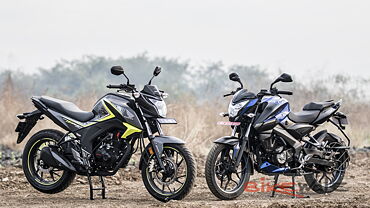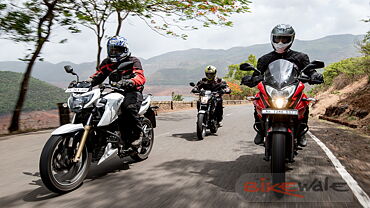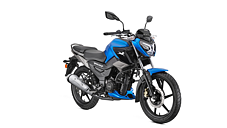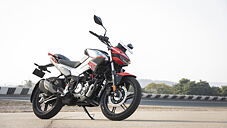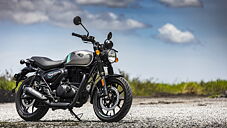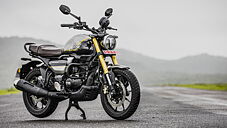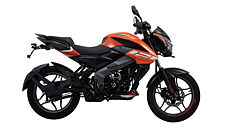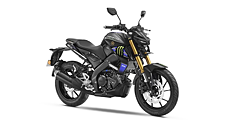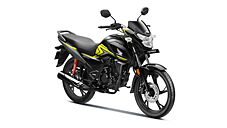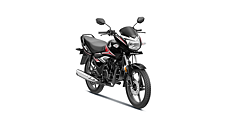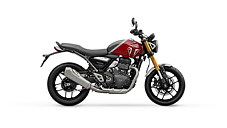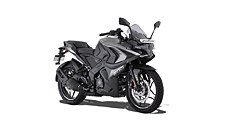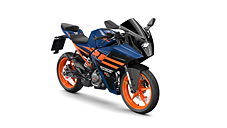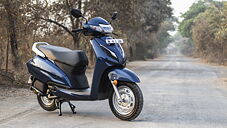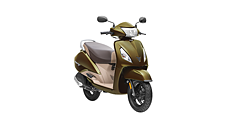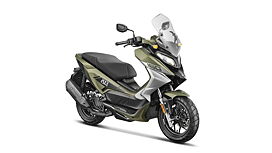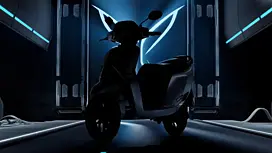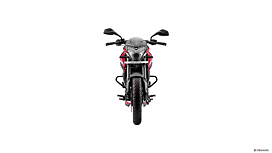Introduction

Seems like déjà vu. We just had the Suzuki Gixxer and the Yamaha FZS-FI locking horns a couple of months back right here on BikeWale. You can read more about it HERE. And at the end, the Gixxer emerged victorious.
But here we are again with both the Gixxer and the FZ, and for good reason. The last time round, we couldn’t get a Bajaj Pulsar AS150 in time to join the test. More importantly, we also now have the Honda Hornet 160R.
And to find out how these bikes stack up, we headed to Malgund; a sleepy, beach town a few kilometres short of Ganpatipule on the coastal highway from Mumbai to Goa. The roads leading to Malgund are narrow, undulating, broken, winding, and constantly changing in elevation. Could we have asked for a better barometer to read these bikes? I think not. So, here’s what we found out…

Design & Style
Bajaj Pulsar AS150: 7/10
Honda Hornet 160R: 8/10
Suzuki Gixxer: 7.5/10
Yamaha FZS-FI: 7.5/10

Even before swinging a leg over, one thing is clear: the Honda Hornet 160R wins the style contest hands down. In fact, it makes the handsome Suzuki Gixxer look a bit dated. The butch stance, the meaty tank, the straight tail and just the right amount of embellishments give the Hornet an aura of desirability that none of the others can match.
The Pulsar AS150, meanwhile, borrows its styling from the Pulsar 200NS. It has a similar tank, side panels, tail and taillights. The only differentiating bit is the front half fairing, which lends the bike its name – AS for Adventure Sports. It’s not a great design, and in this company it already looks dated.
As for the Gixxer and the FZ, these seem to follow the same stylebook: Muscular tank, bikini fairing, an upswept tail, meaty forks and chunky tyres. Honestly, these look so similar, if you like one; you’d definitely like the other.

Ergonomics & Quality
Bajaj Pulsar AS150: 7/10
Honda Hornet 160R: 8/10
Suzuki Gixxer: 8/10
Yamaha FZS-FI: 8/10

When you have over 350km to cover with photography thrown in, chances are you’d be in the saddle for a whole lot longer than the distance suggests. I’d say about 12 hours because that’s how long we took. But by the end of it, one thing was clear – none of these bikes are uncomfortable by any stretch. They are different though.

The Pulsar AS150 has the most upright seating. Upright bar, slightly rearset foot pegs and relatively higher seating. The Pulsar’s seat is the firmest, and it wasn’t to everyone’s liking. The one bike that everyone did take to, however, was the Gixxer. The ergos on the Suzuki feel natural. The seating triangle is spot on; the seat, comfortable; and the moment you sit on the Gixxer, it feels you have been riding it all your life.

The Yamaha – which clearly is the inspiration for the Gixxer – is nearly as good. But, somehow between the two, the Gixxer’s seating feels more comfortable and it gives you a higher sense of control. As for the Hornet 160R, it too follows the same recipe of a wide and flat handlebar, low seating and rearset pegs. And it works wonderfully especially with good seat cushioning and a tank design that allows you to fix yourself to the bike superbly.

Quality wise, apart from the Pulsar – which with its inconsistent and wider panel gaps at places – leaves a little to be desired, the other three are pretty much sorted. Between the three, the Honda stands out. Be it better fit with closer tolerances or the higher attention to detail, the Hornet has this one in the bag.
Feature & Technology
Bajaj Pulsar AS150: 8.5/10
Honda Hornet 160R: 8/10
Suzuki Gixxer: 8/10
Yamaha FZS-FI: 7.5/10

By the time we get to Malgund, its dark. And I am pleasantly reminded about Bajaj’s ingenious move of introducing backlit switchgear. The AS150 is the only one to have it here. Now, the functionality benefit of backlit switchgear might be debatable, but it’s great in terms of the feel-good factor. In fact, when it comes to features, the Pulsar packs in the most.

It has a projector headlamp that lends the Bajaj the best lighting in this bunch by far. It also gets digital instrumentation with read outs for time, side stand indication and a service reminder. There’s a shift and reserve light, LED tail lamps and tubeless tyres.

The Gixxer meanwhile gets a radial rear tyre to click off the technology box. But, it also has a digital clock with info on time and selected gear besides a programmable shift light. And, there’s an LED tail lamp. So, it’s not too bad. The same however can’t be said about the Yamaha, the only bike here not to get an LED tail lamp. In fact, the FZ has the shortest feature list which ends with digital instrumentation. But then, it scores high on tech. It’s also the only one here to get fuel injection and is the only other bike apart from the Gixxer to get a lighter, radial rear tyre.

The Honda is pretty much run of the mill in terms of features – digital instrumentation with a read out for time, LED tail lamp, and tubeless tyres. In terms of technology, it is the only bike here to get a rear disc brake. But more importantly, the Hornet gets Combined Braking System (CBS).
Engine & Gearbox
Bajaj Pulsar AS150: 6.5/10
Honda Hornet 160R: 7/10
Suzuki Gixxer: 7.5/10
Yamaha FZS-FI: 7/10

Earlier in the day, I began the ride astride the Pulsar. It seemed like an exciting proposition; an affordable adventure bike doesn’t come by very often. But then, within a few kilometres it was clear, this one isn’t an ADV at all. The engine, the most powerful here with nearly 17bhp of max power, sadly has relatively poor torque output. And that too comes in as late as 7,000rpm. No wonder the AS150 seems to have very little purchase in the low and mid range. It’s only post 8,500rpm that it really begins to pull. But by then, the engine is at its peak in terms of harshness, noise and vibes. The Pulsar’s gearbox is nothing to write home about either.

The Yamaha FZS FI’s engine and gearbox are just the opposite. The gearbox is crisp, and it slots with precision and demands just the right amount of effort. The engine is quiet too and it throws up negligible vibes, no matter how hard or high you rev it. And it is the most refined engine in this test. But, it’s also the most boring. The 149cc engine gets fuel injection but it makes less than 13bhp. The peak torque, like the Pulsar, is barely 13Nm. And on the road, the FZ has a disappointing mid and top end, especially compared to others in this test. We did however like the throttle response. Thanks to FI, it’s linear, effective and instantaneous.

The Hornet 160R feels much better on the road. It gets the same engine as the Unicorn but makes more power and at a higher rpm. So, it does need a bit of winding up to get the best from it. The mid range is flat; it’s better than the FZ but doesn’t feel like nearly 15Nm are hard at work. Get it to 7,000rpm however, and the Hornet’s engine changes character for the better. It pulls with more vigour and responds to throttle corrections with more sincerity. The Honda is also smoother even when ridden flat out compared to the Pulsar and Gixxer engines.

But, our pick is the Suzuki Gixxer. It might not be as smooth as the Hornet or the FZ, and it might not have the dramatic thrust of the Pulsar at higher rpm, but the Suzuki has the most usable power delivery of the lot. Tackling the Konkan ghats on the ride, the Gixxer was the most fun, especially when exiting tight uphill bends. It has the strongest low and mid range here and a commendable top end as well.
Performance
Bajaj Pulsar AS150: 7/10
Honda Hornet 160R: 7/10
Suzuki Gixxer: 7/10
Yamaha FZS-FI: 6/10

If it’s overall performance you are after – rideability, mile munching ability and quick bursts off red lights – the Gixxer is the one to go for. If you don’t like the Gixxer, the Hornet is your next best option. It’s not as potent as the Gixxer, but it never feels slow or lacking. While the only reason you’d want the Pulsar, by the way, is its outright acceleration ability from a stand still. And, yes, its high top speed. The Yamaha meanwhile brings up the tail. It just doesn’t have the capacity or the power to keep up.

Ride Quality
Bajaj Pulsar AS150: 7/10
Honda Hornet 160R: 7/10
Suzuki Gixxer: 6.5/10
Yamaha FZS-FI: 6/10

The Yamaha FZS FI is also the least comfortable on poor roads. It’s stiff, a little skittish and not very kind on the back. The Gixxer gives the Yamaha close competition and is nearly as uncomfortable. But, if we had to pick a bike to deal with poor roads with a full bladder – as I had to towards the evening nearing Malgund – it would be the Pulsar AS150. It didn’t kick up, skip around or force me to stand on the pegs (which would have been difficult anyway given the Pulsar is anything but an ADV). But, it’s the Hornet 160R that impressed most. It doesn’t have a plush ride. But, like the Pulsar, the Honda rides flat. Moreover, where the Pulsar tends to lose its front and crash into potholes, the Honda irons all that out with more finesse. It is also the best bike to tackle undulations with, especially at higher speeds.

Handling & Braking
Bajaj Pulsar AS150: 6/10
Honda Hornet 160R: 7/10
Suzuki Gixxer: 7.5/10
Yamaha FZS-FI: 8/10

Earlier in the afternoon, though, things were a lot better. We had just passed Poladpur on NH66. And the road ahead – the next 20 kilometres of it – was pure bliss. It’s a ghat but beautifully surfaced, with some open corners and hardly any traffic. The Yamaha FZ proved to be the easiest to ride. It’s the quickest, most stable and predictable handling bike here. And there’s so much grip on offer from those MRFs that you can lean it all the way to the pegs and keep getting away with it.

We would have said the FZ is the most fun to ride bike here, if it wasn’t for its lack of power going up the ghat. The Gixxer though wasn’t lacking on any count. It’s very close to the FZ in terms of handling and braking but as an added benefit, it has the torque to pull you through thick and thin. It’s agile, communicative and forgiving.

The Pulsar brings up the tail here. The Bajaj isn’t a bad handler, but its tall stance, its upright seating and the sheer lack of communication from the tyres and chassis – plus the constant wringing of the engine which gets bugging after a while – take the fun out of the equation. The Hornet might not have the precision or the grip of either the Suzuki or the Yamaha, but it’s no slouch around bends. You need to work it a little harder than the former two, but once you get the hang of the bike, it’s a whole lot of fun. Plus, it has the best braking in class.

Fuel Efficiency
Bajaj Pulsar AS150: 7/10
Honda Hornet 160R: 7/10
Suzuki Gixxer: 7.5/10
Yamaha FZS-FI: 8/10

Just the facts. The Yamaha FZS FI is the most fuel-efficient motorcycle in this test. On our test cycle it returned 58kmpl while on the ride with the throttle pinned, it still managed 41kmpl. The Gixxer comes in next with 54kmpl and 37kmpl, respectively. Actually, there’s nothing to choose between the Gixxer, the Pulsar and the Hornet. The Pulsar and the Hornet returned 53kmpl and 52kmpl on our cycle while on the ride the Pulsar returned 37kmpl (the same as the Gixxer) and the Hornet did 35kmpl.

Price & Warranty
Bajaj Pulsar AS150: 7/10
Honda Hornet 160R: 6/10
Suzuki Gixxer: 7.5/10
Yamaha FZS-FI: 6/10

As expected the Yamaha with its fuel injection tech, is the most expensive at close to Rs 98,000, on the road in Mumbai. The Hornet 160R costs nearly Rs 94,000 while the Pulsar AS150 is a little cheaper at Rs 93,000. The Gixxer, then, is the most affordable here at a tad less than Rs 91,000 and this price advantage might prove to be hugely helpful for the Suzuki, come the verdict.
Desirability
Bajaj Pulsar AS150: 6/10
Honda Hornet 160R: 7.5/10
Suzuki Gixxer: 7/10
Yamaha FZS-FI: 7/10

The Honda Hornet 160R, courtesy its styling, is the most desirable bike here. The Gixxer and the Yamaha are on even footing and if the Pulsar was better finished and had some of the Adventure character is promises, it might have been able to score higher here. But as it stands now, the Pulsar brings up the tail here as well.
Verdict
Bajaj Pulsar AS150: Rank 4
Final Points: 69/100
Price: Rs 92,700, OTR, Mumbai

No surprise here. The Bajaj does have a few things going for it, but it comes across as a mix-and-match of things and with it, a compromise. It’s not a bike that’s been designed with a single aim in mind. And therefore, it fails to excel on any count.
Yamaha FZS-FI: Rank 3
Final Points: 71/100
Price: Rs 98,050, OTR Mumbai

Good of us to have brought the FZ to this comparison; at least now we know where it stands in the face of growing competition. The FZ is still a wonderful motorcycle but it needs more grunt to add to its visual drama. It also needs to be better priced.
Honda Hornet 160R: Rank 2
Final Score: 72.5/100
Price: Rs 98,933, OTR, Mumbai

The new kid on the block comes in second; something Honda’s previous attempts in this class could only have dreamt about. The Hornet has the style, the performance, the dynamic ability, which make it very likeable indeed. But the pricing, like the FZ, is pretty steep and the Hornet comes with the worst warranty as well.
Suzuki Gixxer: Rank 1
Final Score: 74/100
Price: Rs 90,735, OTR, Mumbai

But for now, the Suzuki Gixxer till retains the top slot. Suzuki clearly has rewritten the rulebooks here, which every other mass-market bike maker will now struggle to cope with. The Gixxer is superbly priced; it’s the most fun to ride; it’s fuel-efficient; it’s comfortable; and it’s our worthy winner. No wonder, it was the Gixxer keys everyone wanted on our ride back home the next day.
Photography: Kapil Angane
Final Scores
| Parameters/Models | Max Points | Suzuki | Honda | Yamaha | Bajaj |
| Gixxer | Hornet 160R | FZS-FI | AS150 | ||
| Rank | 1 | 2 | 3 | 4 | |
| Looks & Styling | 10 | 7.5 | 8 | 7.5 | 7 |
| Ergonomics & Quality | 10 | 8 | 8 | 8 | 7 |
| Features & Technology | 10 | 8 | 8 | 7.5 | 8.5 |
| Engine & Gearbox | 10 | 7.5 | 7 | 7 | 6.5 |
| Performance | 10 | 7 | 7 | 6 | 7 |
| Ride quality | 10 | 6.5 | 7 | 6 | 7 |
| Handling & Braking | 10 | 7.5 | 7 | 8 | 6 |
| Fuel Efficiency | 10 | 7.5 | 7 | 8 | 7 |
| Price & Warranty | 10 | 7.5 | 6 | 6 | 7 |
| Desirablility | 10 | 7 | 7.5 | 7 | 6 |
| Total | 100 | 74 | 72.5 | 71 | 69 |
Specifications
| MAKE | Honda | Suzuki | Yamaha | Bajaj |
| Model | CB Hornet 160R | Gixxer | FZ-S FI | Pulsar AS150 |
| POWERTRAIN | ||||
| Engine Type | Air-cooled | Air-cooled | Air-cooled | Air-cooled |
| Capacity | 162.71cc | 154.9cc | 149cc | 149.5cc |
| Max Power | 15.6bhp | 14.6bhp | 12.9bhp | 17bhp |
| Max Torque | 14.76Nm | 14Nm | 12.8Nm | 13Nm |
| Gearbox | 5 speed | 5 speed | 5 speed | 5 speed |
| Clutch | Wet, multiplate | Wet, multiplate | Wet, multiplate | Wet, multiplate |
| Fuel Efficiency (Tested) | 52 | 54 | 58 | 53 |
| CYCLE PARTS | ||||
| Chassis | Diamond | Single downtube | Diamond | Steel perimeter frame |
| Supension F | Telescopic | Telescopic | Telescopic | Telescopic |
| Suspension R | Mono shock, 3 Step adjustable | Mono shock, 7 Step adjustable | Mono shock, 7 Step adjustable | Mono shock, 7 Step adjustable |
| Brakes F | 276mm disc | 266mm disc | 267mm disc | 240mm disc |
| Brakes R | 220mm disc | 130mm drum | 130mm drum | 130mm drum |
| Tyre F | 100/80-17 Tubeless | 100/80-17 Tubeless | 100/80-17 Tubeless | 80/100-17 Tubeless |
| Tyre R | 140/70-17 Tubeless | 140/60-17 Tubeless | 140/60-17 Tubeless | 110/80-17 Tubeless |
| MEASURES | ||||
| Fuel Tank | 12 litres | 12 litres | 12 litres | 12 litres |
| LxWxH | 2041mm x 783mm x 1067mm | 2050mm x 785mm x 1030mm | 1990mm × 770mm × 1050mm | 2070mm x 804mm x 1205mm |
| Wheelbase | 1345mm | 1330mm | 1330mm | 1363mm |
| Kerb Weight | 142kg | 135kg | 132kg | 143kg |
| COST | ||||
| Price (on-road, Mumbai) | Rs 98,933 | Rs 90,735 | Rs 98,050 | Rs 92,700 |
| Warranty | 2 years/24,000kms | 2 years/30,000kms | 2 years/30,000kms | 2 years/30,000kms |
Gallery
1/119
Double Tap to Zoom











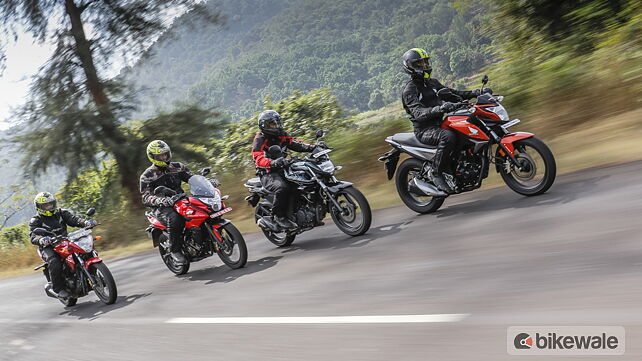







![[object Object] ThumbNail Images [object Object] ThumbNail Images](https://imgd.aeplcdn.com/642x361/bw/ec/21109/Pulsar-AS150-Gixxer-FZS-CB-Hornet-160R-Side-62154.jpg?v=201711021421&q=80)
![[object Object] ThumbNail Images [object Object] ThumbNail Images](https://imgd.aeplcdn.com/642x361/bw/ec/21109/Pulsar-AS150-Gixxer-FZS--CB-Hornet-160R-Rear-threequarter-62155.jpg?v=201711021421&q=80)
![[object Object] ThumbNail Images [object Object] ThumbNail Images](https://imgd.aeplcdn.com/642x361/bw/ec/21109/Pulsar-AS150-Gixxer-FZS--CB-Hornet-160R-Action-62156.jpg?v=201711021421&q=80)
![[object Object] ThumbNail Images [object Object] ThumbNail Images](https://imgd.aeplcdn.com/642x361/bw/ec/21109/Pulsar-AS150-Gixxer-FZS-CB-Hornet-160R-Action-62157.jpg?v=201711021421&q=80)
![[object Object] ThumbNail Images [object Object] ThumbNail Images](https://imgd.aeplcdn.com/642x361/bw/ec/21109/Pulsar-AS150-Gixxer-FZS-CB-Hornet-160R-Front-threequarter-62158.jpg?v=201711021421&q=80)

